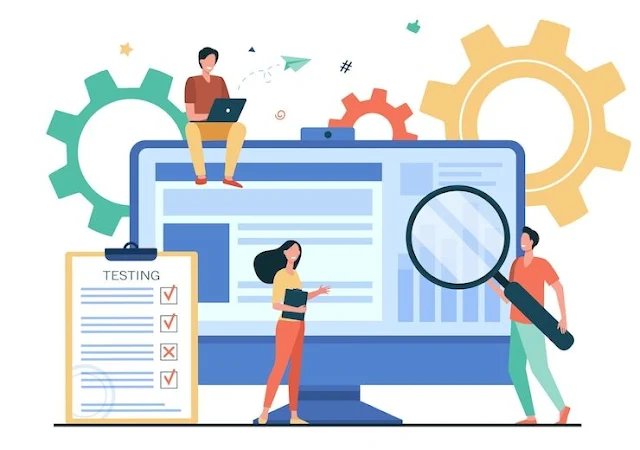The world of media and entertainment is expanding more rapidly than ever before. According to PWC, traditional TV will lose up to 25 million subscribers over the next five years. A 6.9 percent CAGR growth in the OTT industry (over-the-top media services, such as streaming platforms, etc.) is anticipated by 2025.
Due to the same reason, the media industry needs to start with a thorough study before leveraging media software testing services and QA media technology experts to help with idea generation or evaluating the viability of concepts to stand out.
Thus, the relevance of media software testing is increasing even more! A glitchy digital platform is more unpleasant than enjoyable; in other words, it doesn't serve its intended purpose. It becomes one of the most critical competitive advantages that aid in enticing customers away from long-time competitors' service users.
How media software testing can be done efficiently:
QA automation testing for the media and entertainment industry can be a pivotal catalyst. Testers and QA professionals can perform software testing efficiently for the media sector in different ways:
1. Functional Testing:
It is usually where QA for entertainment and media begins. Its goal is to evaluate a product's functionality. Specialists in quality assurance test features and functionalities while comparing them to customer requirements. Functional Testing includes the following aspects:
2. Feature testing:
It implies evaluating whether or not the features listed in the conditions are present and classifying certain behaviours as either features or bugs.
3. UI testing:
This testing examines front-end components that permit interactions with back-end functions (buttons, forms, text inputs, links, checkboxes, etc.).
4. API testing:
It involves examining how third-party services, databases, operating systems, libraries, etc., are integrated.
5. Acceptance testing:
It is the last check before a product is released. Users not on the development team are giving the effect so they can give it a fresh set of eyes and share their initial feedback.
Non-functional testing is another critical component of media software testing behaviour. It is helpful to learn how a product functions and assess its speed, usability, accessibility, and other factors. It sorts of aids in figuring out whether a product fulfils end-user expectations. Some of the often-employed actions that fit into this area include:
1. Performance testing –
A series of tests used to gauge a product's capacity to manage various user loads, discover how it responds to high traffic, understand how it scales, etc.
2. Compatibility testing:
It involves running tests on devices with various operating systems, browsers, and hardware configurations.
3. Localization testing:
It examines a product from the viewpoint of a specific audience, typically one that locates in a particular region, speaks a specific language, and has individual cultural quirks.
4. UX testing:
It is a review demonstrating how simple and enjoyable a product is to use, considering both the design and logic implemented.
Most businesses continue to improve and develop their products. It is important to remember that QA testing for media and entertainment services continues long after the product is released. Software support and maintenance follow the release. An app improves by adding new features and more content, updating the design, expanding into new markets and other strategies, and performing the following QA procedures, which can be done.
- Smoke testing is a basic set of checks for glaring errors performed after bug fixing or updating a news release.
- Regression testing is a sort of testing designed to find errors in previously tested functionality following code modifications (bug fixes or implementation of new features).
- Business analysis is the process of estimating the features and performance of a product, taking into account user input and trends, and searching for ways to scale and enhance the effect.
- QA auditing is the systematic evaluation of product quality by a separate department or business to assess product performance impartially.
Key Points To Consider In Media Software Testing
Principal functionality:
Every application and service has a unique collection of features, and a media app is no exception. It is crucial to test the essential operation of the product, including the special features and highlights meant to draw customers.
Platform functionality:
All E&M services, not just streaming platforms, depending on factors like loading speed, response time, and other relevant metrics.
Intelligent personalization:
People are becoming pampered. They are fond of flexibility and comfort. They anticipate that service providers would rapidly identify their interests and preferences and present offers and content that are pertinent to them.
The ability to make payments:
A secure payment gateway should provide a selection of payment options. The proper functioning of the billing system is also crucial.
Privacy: Lastly, individuals are very concerned about the security and privacy of their online activities. It is crucial to prevent any leaks or security breaches because E&M service companies deal with a lot of sensitive data.
Wrapping Up!!
Software quality becomes one feature that makes a product stand out in the digital setting. Testing the software before it goes live is essential, and the media industry is no exception.
With increasing technological advancements, users inclining to use media portals, which are more flexible, personalized, and uniquely adjusted. And if you need to experience sustainable innovation with your media technology, sticking to the above-defined aspects of testing is crucial.
For more blogs click here.


Post a Comment